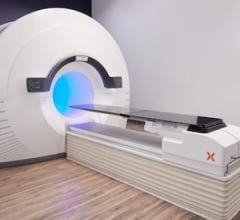August 29, 2014 — Kit Lam and colleagues from UC Davis and other institutions have created dynamic nanoparticles (NPs) that could provide an arsenal of applications to diagnose and treat cancer. Built on an easy-to-make polymer, these particles can be used as contrast agents to light up tumors for magnetic resonance imaging (MRI) and positron emission tomography (PET) scans or deliver chemo and other therapies to destroy tumors. In addition, the particles are biocompatible and have shown no toxicity. The study was published online in Nature Communications.
Jessica Tucker, program director of drug and gene delivery and devices at the National Institute of Biomedical Imaging and Bioengineering, which is part of the National Institutes of Health, said the approach outlined in the study has the ability to combine both imaging and therapeutic applications in a single platform, which has been difficult to achieve, especially in an organic, and therefore biocompatible, vehicle.
Though not the first nanoparticles, these may be the most versatile. Other particles are good at some tasks but not others. Non-organic particles, such as quantum dots or gold-based materials, work well as diagnostic tools but have safety issues. Organic probes are biocompatible and can deliver drugs but lack imaging or phototherapy applications.
Built on a porphyrin/cholic acid polymer, the nanoparticles are simple to make and perform well in the body. Porphyrins are common organic compounds. Cholic acid is produced by the liver. The basic nanoparticles are 21 nanometers wide.
To further stabilize the particles, the researchers added the amino acid cysteine (creating CNPs), which prevents them from prematurely releasing their therapeutic payload when exposed to blood proteins and other barriers. At 32 nanometers, CNPs are ideally sized to penetrate tumors, accumulating among cancer cells while sparing healthy tissue.
In the study, the team tested the nanoparticles, both in vitro and in vivo, for a wide range of tasks. On the therapeutic side, CNPs effectively transported anti-cancer drugs, such as doxorubicin. Even when kept in blood for many hours, CNPs only released small amounts of the drug; however, when exposed to light or agents such as glutathione, they readily released their payloads. The ability to precisely control chemotherapy release inside tumors could greatly reduce toxicity. CNPs carrying doxorubicin provided excellent cancer control in animals, with minimal side effects.
CNPs also can be configured to respond to light, producing singlet oxygen, reactive molecules that destroy tumor cells. They can also generate heat when hit with laser light. Significantly, CNPs can perform either task when exposed to a single wavelength of light.
CNPs offer a number of advantages to enhance imaging. They readily chelate imaging agents and can remain in the body for long periods. In animal studies, CNPs congregated in tumors, making them easier to read on an MRI. Because CNPs accumulated in tumors, and not so much in normal tissue, they dramatically enhanced tumor contrast for MRI and may also be promising for PET-MRI scans.
This versatility provides multiple options for clinicians, as they mix and match applications.
For more information: www.ucdmc.ucdavis.edu/cancer


 January 13, 2026
January 13, 2026 









